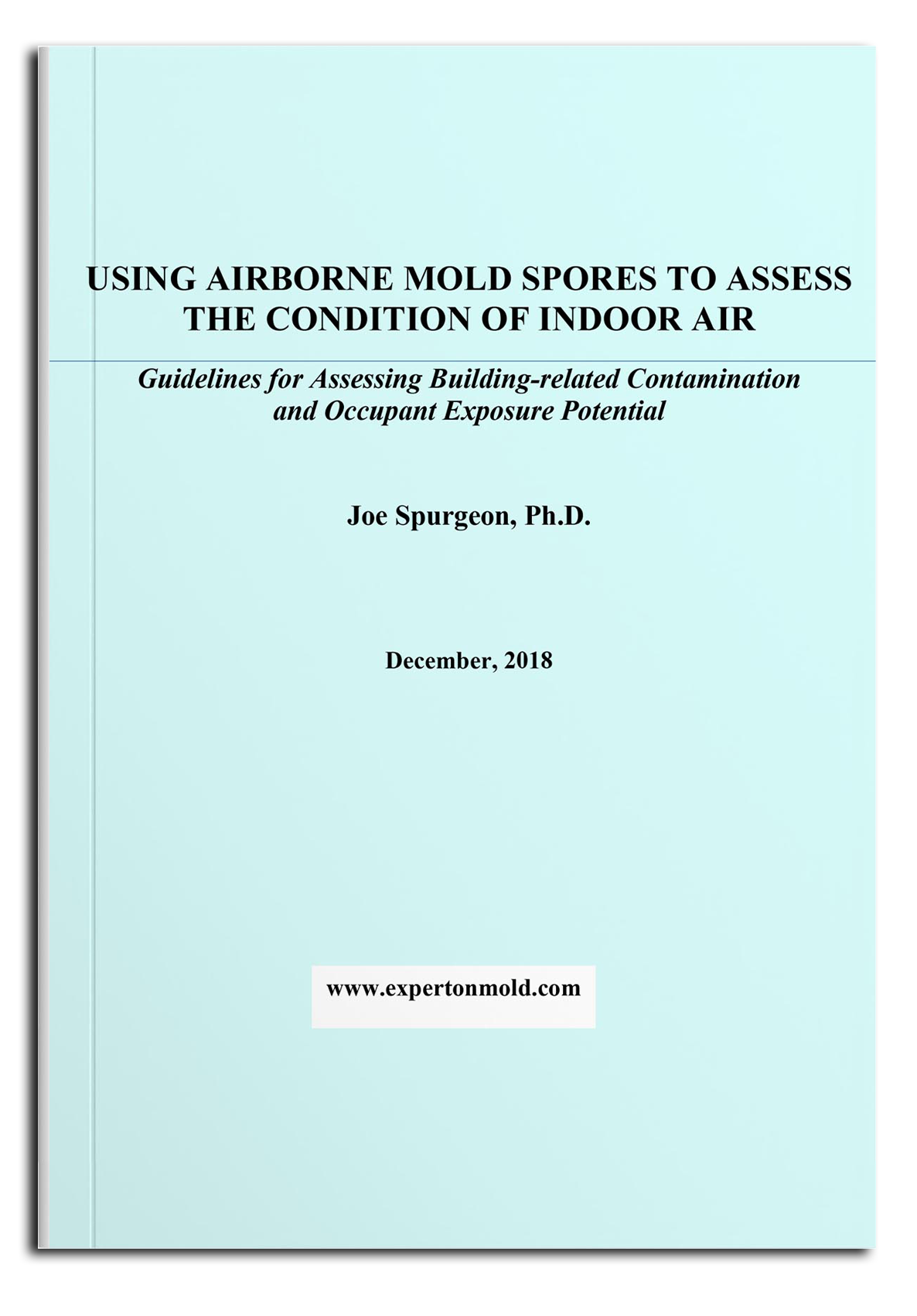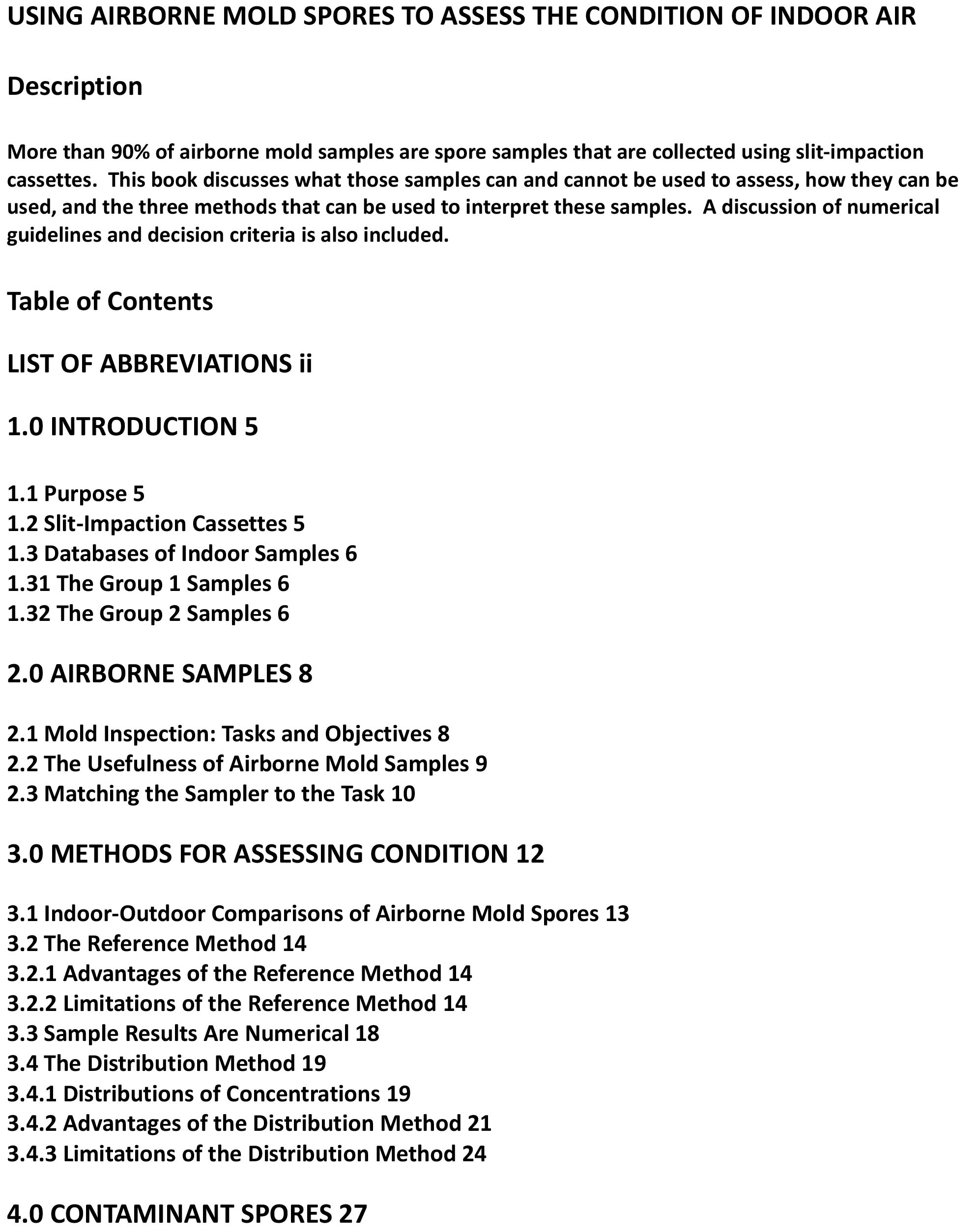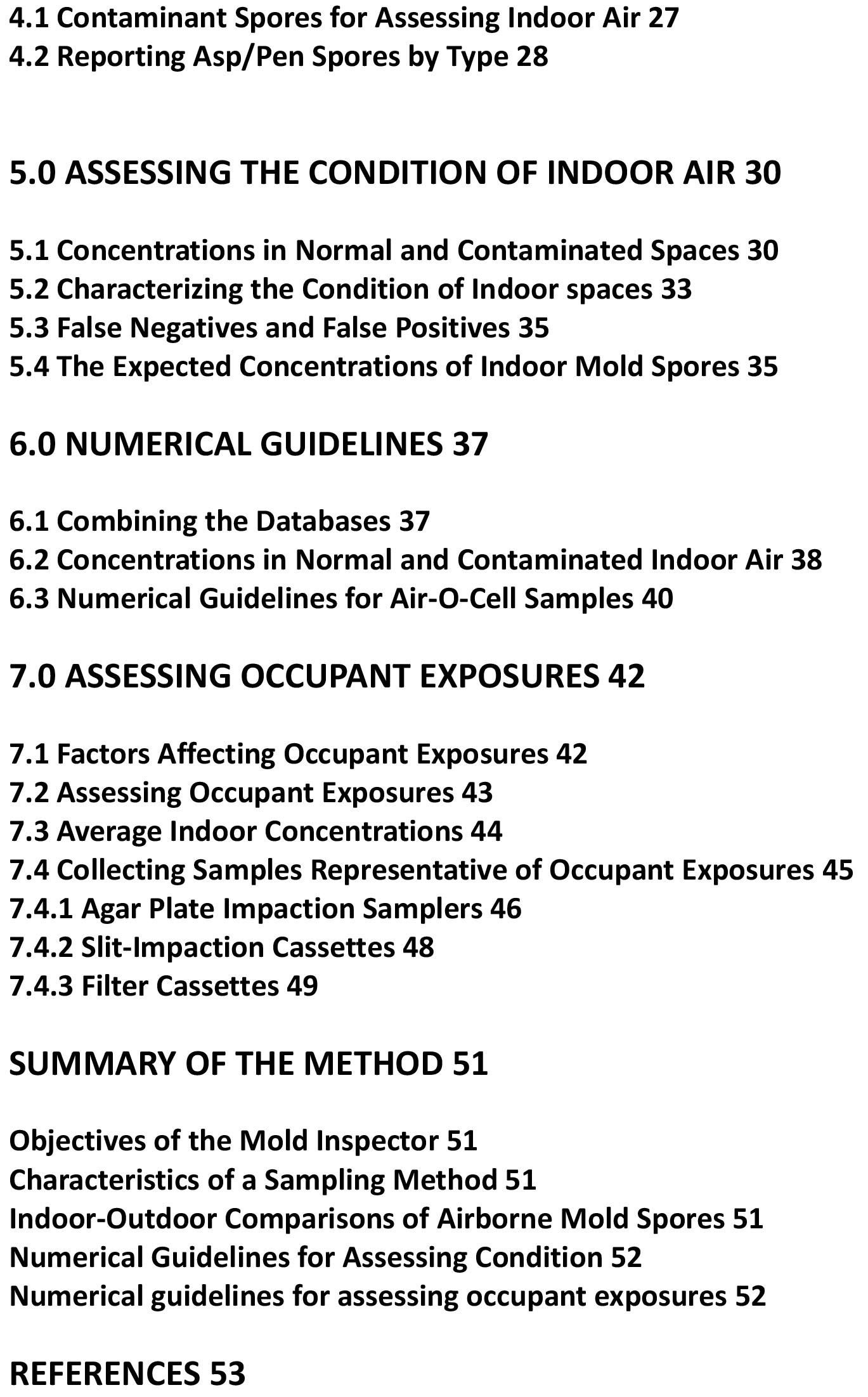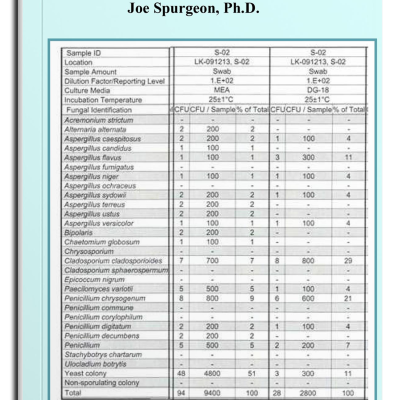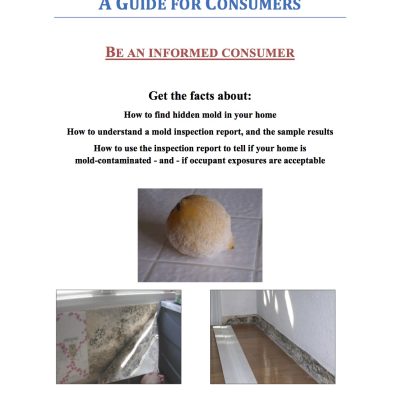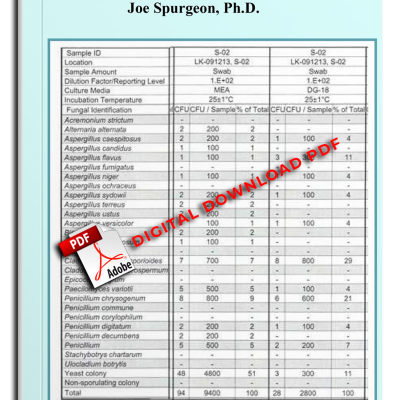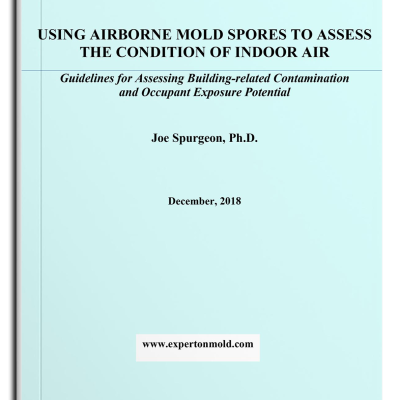Description
More than 90% of airborne mold samples are spore samples that are collected using slit-impaction cassettes. This book discusses what those samples can and cannot be used to assess, how they can be used, and the three methods that can be used to interpret these samples. A discussion of numerical guidelines and decision criteria is also included.
Table of Contents
LIST OF ABBREVIATIONS ii
1.0 INTRODUCTION 5
1.1 Purpose 5
1.2 Slit-Impaction Cassettes 5
1.3 Databases of Indoor Samples 6
1.31 The Group 1 Samples 6
1.32 The Group 2 Samples 6
2.0 AIRBORNE SAMPLES 8
2.1 Mold Inspection: Tasks and Objectives 8
2.2 The Usefulness of Airborne Mold Samples 9
2.3 Matching the Sampler to the Task 10
3.0 METHODS FOR ASSESSING CONDITION 12
3.1 Indoor-Outdoor Comparisons of Airborne Mold Spores 13
3.2 The Reference Method 14
3.2.1 Advantages of the Reference Method 14
3.2.2 Limitations of the Reference Method 14
3.3 Sample Results Are Numerical 18
3.4 The Distribution Method 19
3.4.1 Distributions of Concentrations 19
3.4.2 Advantages of the Distribution Method 21
3.4.3 Limitations of the Distribution Method 24
4.0 CONTAMINANT SPORES 27
4.1 Contaminant Spores for Assessing Indoor Air 27
4.2 Reporting Asp/Pen Spores by Type 28
5.0 ASSESSING THE CONDITION OF INDOOR AIR 30
5.1 Concentrations in Normal and Contaminated Spaces 30
5.2 Characterizing the Condition of Indoor spaces 33
5.3 False Negatives and False Positives 35
5.4 The Expected Concentrations of Indoor Mold Spores 35
6.0 NUMERICAL GUIDELINES 37
6.1 Combining the Databases 37
6.2 Concentrations in Normal and Contaminated Indoor Air 38
6.3 Numerical Guidelines for Air-O-Cell Samples 40
7.0 ASSESSING OCCUPANT EXPOSURES 42
7.1 Factors Affecting Occupant Exposures 42
7.2 Assessing Occupant Exposures 43
7.3 Average Indoor Concentrations 44
7.4 Collecting Samples Representative of Occupant Exposures 45
7.4.1 Agar Plate Impaction Samplers 46
7.4.2 Slit-Impaction Cassettes 48
7.4.3 Filter Cassettes 49
SUMMARY OF THE METHOD 51
Objectives of the Mold Inspector 51
Characteristics of a Sampling Method 51
Indoor-Outdoor Comparisons of Airborne Mold Spores 51
Numerical Guidelines for Assessing Condition 52
Numerical guidelines for assessing occupant exposures 52
REFERENCES 53

